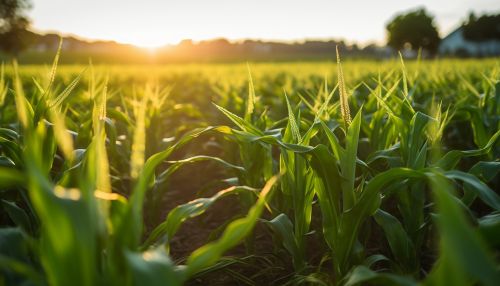Agricultural Biomass
Overview
Agricultural biomass, a term that refers to plant materials and animal waste used as fuel, is a significant aspect of the agricultural industry. This renewable energy source is used in various ways, including the production of heat, electricity, and biofuels. Agricultural biomass is a key component of sustainable farming practices, contributing to the circular economy by reducing waste and greenhouse gas emissions.


Types of Agricultural Biomass
There are several types of agricultural biomass, each with its own unique characteristics and uses. These include:
- Crop Residues: These are the leftovers from crop production, such as corn stalks, wheat straw, and rice husks. Crop residues are often used as a source of heat or to produce biofuels.
- Animal Manure: This type of biomass is a byproduct of livestock farming. Animal manure can be used to produce biogas, a type of biofuel, through a process known as anaerobic digestion.
- Energy Crops: These are crops specifically grown for use as biomass. Examples include switchgrass, miscanthus, and willow. Energy crops are often used to produce biofuels or for direct combustion to generate heat or electricity.
- Agricultural Byproducts: These are the waste products from agricultural processes, such as bagasse from sugarcane processing or pomace from olive oil production. These byproducts can be used as a source of heat or to produce biofuels.
Production and Use of Agricultural Biomass
The production and use of agricultural biomass involve several steps, from the cultivation of biomass sources to their conversion into usable energy.
- Cultivation: This involves the growing of energy crops or the production of crop residues or animal manure. The cultivation practices can vary depending on the type of biomass being produced.
- Harvesting and Collection: Once the biomass sources are ready, they are harvested and collected. This can involve traditional farming practices, such as the harvesting of crops, or the collection of animal manure or agricultural byproducts.
- Conversion: The harvested biomass is then converted into usable energy. This can involve direct combustion, where the biomass is burned to produce heat or electricity, or it can involve more complex processes, such as anaerobic digestion or fermentation, to produce biofuels.
- Use: The energy produced from agricultural biomass can be used in various ways. This can include heating homes or buildings, powering vehicles, or providing electricity.
Benefits and Challenges
Agricultural biomass offers several benefits, including:
- Renewability: Unlike fossil fuels, agricultural biomass is a renewable resource. This means it can be replenished over time, making it a sustainable energy source.
- Reduced Greenhouse Gas Emissions: When used as a fuel, agricultural biomass can help reduce greenhouse gas emissions. This is because the carbon dioxide released when biomass is burned is offset by the carbon dioxide absorbed by the plants as they grow.
- Waste Reduction: Using agricultural waste as biomass can help reduce the amount of waste that needs to be disposed of, contributing to a more circular economy.
However, there are also challenges associated with the use of agricultural biomass:
- Land Use: The cultivation of energy crops can compete with food production for land use. This can potentially lead to food security issues.
- Sustainability: While agricultural biomass is a renewable resource, its production and use must be managed sustainably to avoid negative environmental impacts, such as soil degradation or water pollution.
- Costs: The production and conversion of agricultural biomass can be costly, which can make it less competitive with other energy sources.
Future Perspectives
The future of agricultural biomass as an energy source looks promising, with ongoing research and development aimed at improving its sustainability and efficiency. Advances in genetic engineering and agronomic practices could lead to the development of energy crops with higher yields and better resistance to pests and diseases. Similarly, improvements in conversion technologies could make the production of biofuels from agricultural biomass more efficient and cost-effective.
